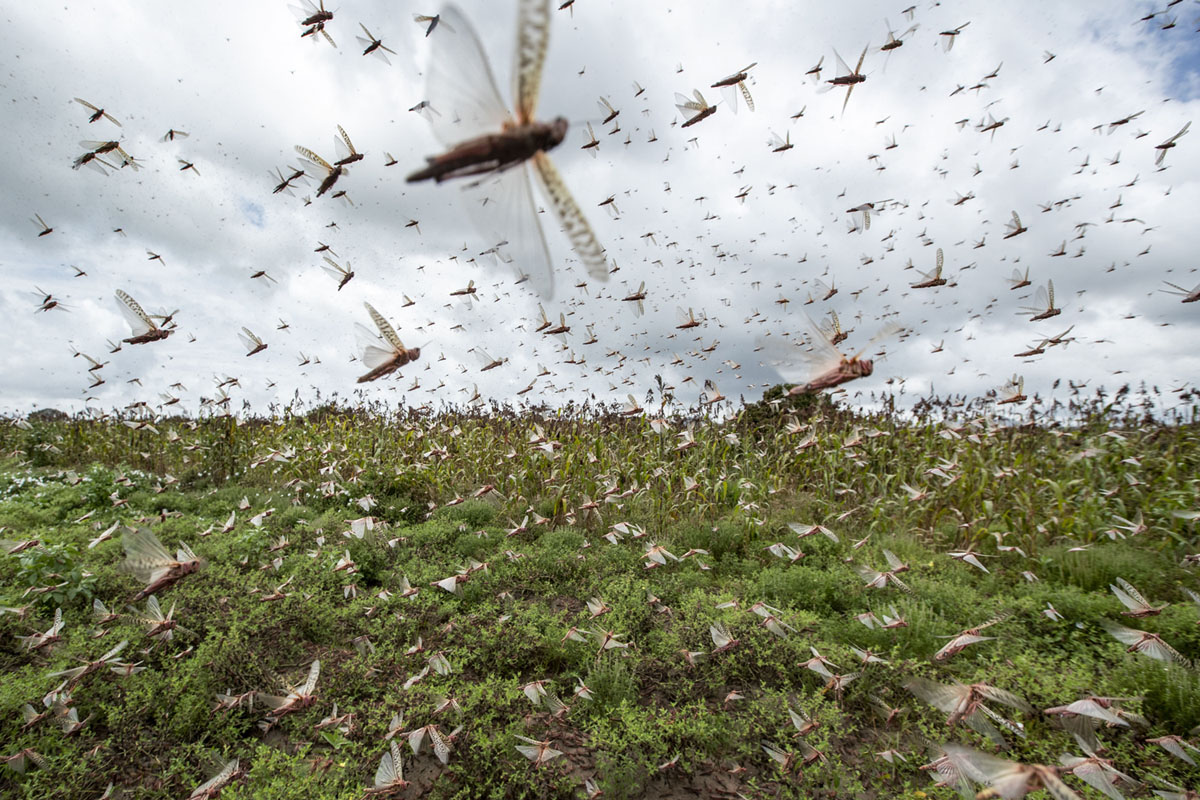Ethiopia Facing Serious Challenge in Controlling Locust Swarms, Asks for Support - ENA English
Ethiopia Facing Serious Challenge in Controlling Locust Swarms, Asks for Support

ENA, January 30/2020 Ministry of Agriculture has appealed for additional financial support as Ethiopia is facing a stiff challenge in controlling the spread of desert locust swarms coming from destabilized countries.
Locust swarms are entering the country from four directions since June 2019, and a new generation of breeding locust could continue to challenge the country.
Plant Health Care Director-General at Ministry of Agriculture, Woldehawariat Assefa told ENA that it is difficult for Ethiopia to control the numerous locust swarms coming from destabilized areas where cooperation could not be effective.
“Cooperation with Somalia and Yemen, where the desert locust swarms are emanating and entering Ethiopia, is low due to security situations in the countries. Though we signed an agreement to cooperate with Somaliland, we are not able to do a meaningful work due to the security situation in the area,” he explained.
According to the director-general, even if the ministry rented 3 aircraft sprayers and worked in cooperation with the Desert Locust Control Organization for East Africa, locust threat on crops in Ethiopia is high.
He pointed out that the ministry had fought hard to minimize the damage caused by locust on crops to some extent in five regions and 62 woredas from mid-June 2019 till the end of December 2019. But attack by the locust swarms continued unabated to date into eastern and southeastern Ethiopia.
“Despite spending over 80 million birr to control the pest, we still need to double the budget in order to control the swarm. We need more money to pay for the rented aircraft and other inputs. So we need more support. We are asking the government and donors to support us,” Woldehawariat noted.
The number of aircraft on duty are enough, and could be added when necessary, he said, stressing however the lack of finance.
The ministry believes that the locust attack will continue until February, but DLCO-EA Senior Information and Forecasting Expert, Felege Elias, said “the desert locust infestation could stay up until June (2020).”
Recently locust infestation has continued in Somalia, and the swarms are entering Ethiopia, the expert noted, adding that “the big problem in eastern Ethiopia is the absence of prevention and control mechanism in Somalia mainly due to security challenges.”
According to FAO update of January 28, 2020, the desert locusts will spread further as a new generation of breeding starts in the Horn of Africa.
In Ethiopia, the swarms will continue to be present throughout eastern areas, including Ogaden, while some of them will continue to move to the south and into the Rift Valley, it added.
FAO stated that the locust has also been seen in Kenya, Somalia, South Sudan, Djibouti, Sudan, Eritrea, and Uganda.